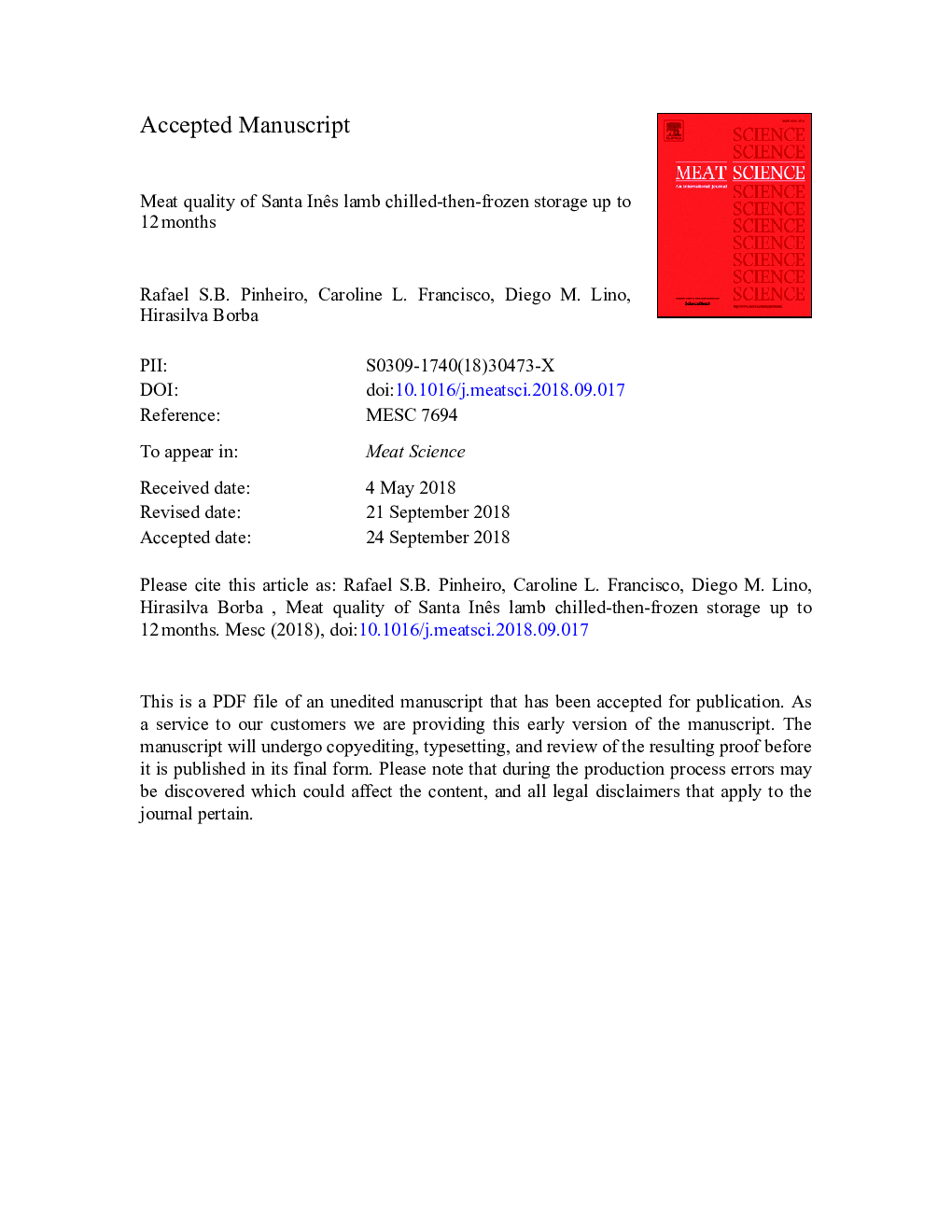| Article ID | Journal | Published Year | Pages | File Type |
|---|---|---|---|---|
| 11010709 | Meat Science | 2019 | 35 Pages |
Abstract
Frozen lamb meat storage is widely used to extend its shelf life. However, it is scarcely known whether this practice changes the quality of lamb meat. The aim of this study was to evaluate the meat quality at five frozen storage periods (0, 3, 6, 9, and 12â¯months after slaughter) of 30 Santa Inês male lambs (hair sheep) finished in feedlot. Samples of M. longissimus lumborum (LL) were used for the analyses of pH, color, cooking loss, fluid loss, water holding capacity, shear force, and lipid oxidation. The storage time influenced (Pâ¯<â¯0.01) the meat quality trait values except for the values of luminosity, pH and shear force. The lipid oxidation increased over time during frozen storage. The frozen practice can be used to preserve the Santa Inês lamb meat. However, there are some changes in the meat traits which deserve attention, mainly regarding lipid oxidation, meat color and cooking losses, since these modification types are undesirable and can cause consumer rejection during the purchase, preparation and subsequent product consumption.
Keywords
Related Topics
Life Sciences
Agricultural and Biological Sciences
Food Science
Authors
Rafael S.B. Pinheiro, Caroline L. Francisco, Diego M. Lino, Hirasilva Borba,
